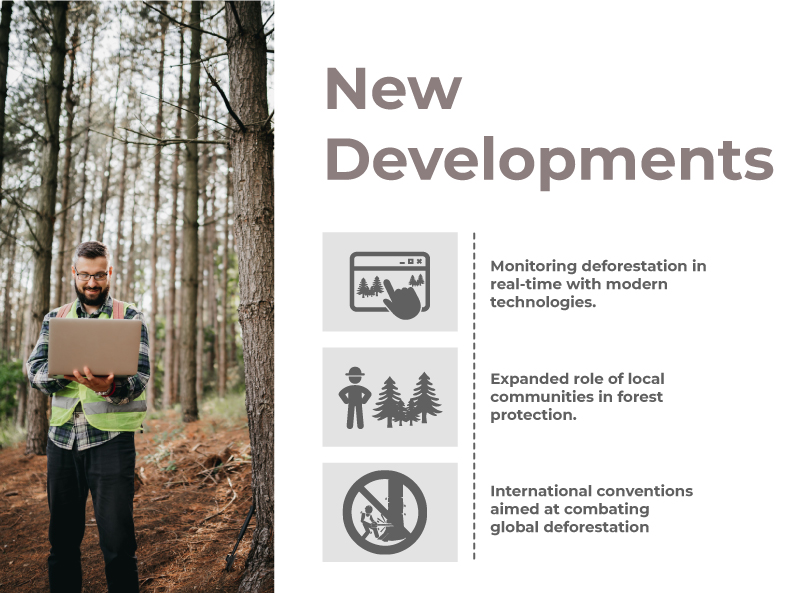Forests, also known as the Earth’s lungs, are facing a global crisis due to deforestation – the destruction of these crucial ecosystems for agriculture, urbanisation, etc. Forests are vital to our planet, accounting for 38% of liveable land and 26% of total land area. Russia has the most forest, with 815 million hectares, followed by the Democratic Republic of the Congo.
Trends
- Annually, 15 billion trees are felled, resulting in a 46% decrease in world tree population since civilisation began.
- 4.7 million hectares of forest have been destroyed yearly during the last decade (UN FAO).
- Data from the past show that one-third of the world’s forests have gone, covering an area twice the size of the United States.
- Surprisingly, although having only 603 million people on the planet, the 1700s marked the midpoint in worldwide forest loss.
- Urban areas occupy only 1% of habitable land, while the UN predicts a population of 10.8 billion by 2100.
Causes
- High-income countries: Product consumption is responsible for 12% of the problem.
- Agriculture is responsible for 60-80% of tropical deforestation due to local demand.
Environmental Impact
- Tropical forests, home to more than half of all species on Earth, are in severe danger.
- Tropical deforestation emits 2.6 billion tonnes of CO2 yearly, accounting for 6.5% of global emissions.
Finally, deforestation is a global disaster with serious effects ranging from biodiversity loss to climate change. Addressing this issue necessitates local and global actions to conserve our forests and ensure our planet’s well-being.








